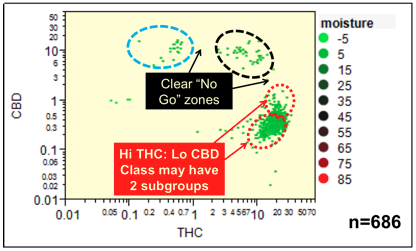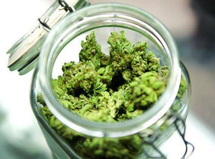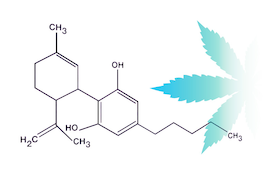 New Rules…. MediCann physicians have the unique opportunity to hear about a person’s experience using cannabis. We can document pain, evaluate anxiety, and review sleep patterns and assess how well cannabis works to improve these symptoms. Gone are the days of sharing myths with someone you don’t know or don’t want to tell that you use cannabis. Cannabis today is accessible, varied, and abundant. As medicine, it’s not just a plant. It’s a capsule, a tincture, an oil, a salve, or ointment. Although the use of cannabis is old, the medical cannabis industry is young. We are just learning about different strains and which to use. Which cannabis helps you sleep? Which is best for pain? Rather than rely on a here today, gone tomorrow individual who is illegally selling cannabis, patients now depend on a knowledgeable physician and knowledgeable dispensary service. That state of California enacted the California’s Medical Cannabis Regulation and Safety Act (MCRSA), on January 1, 2016, to be implemented in January 1, 2018. The act calls for factions of the cannabis industry to apply for specific licenses and follow stated regulations. It brings the young medical cannabis industry one step away from a sneaky purchase in a dark corner of the downtown park and one step closer to safe, clean and natural medicine. Better Medicine…. What does this mean from the patient perspective? For one thing, if you have your own garden, you can continue to grow your own medicinal plants. The new California law allows patients to grow up to 100 square feet of plants. If you grow for patients as their “caregiver”, you have to limit your garden to 500 square feet and serve 5 or fewer patients. For the many of us who don’t have our own garden, dispensaries will continue to be available. Dispensaries will receive their cannabis products from state licensed commercial cultivators and manufacturers. All cannabis will go through mandatory testing and placed in tamper proof packaging. In contrast to the upcoming vote for “adult use”, California’s MCRSA law is already in place with specific regulations being developed. Whether Prop. 64 passes or not, medical cannabis will become available in California in better form and as better medicine. Sativa vs Indica... After attending one of MediCann’s Affiliate Physician offices, a patient receives a recommendation letter (similar to prescription) that allows you to purchase your cannabis medicine at a dispensary (similar to pharmacy). The noticeable difference is that the recommendation letter doesn’t tell you what to use or how much to use. Medical studies have yet to verify appropriate strains and appropriate doses for specific indication. When you arrive at a medical cannabis dispensary, your letter will be verified at the entrance and then you’ll be directed to a counter displaying multiple dried cannabis flowers with different names. Outside of the name, a standard distinction between cannabis products is “Sativa”, “Indica” or a hybrid of both. The reality is that all cannabis plants have been hybridized. Some display a thin leafed “Sativa” trait and others have the broader leafed “Indica” trait. Pearce et al published a survey among medical cannabis users in the Journal of Alternative and Complementary Medicine, finding that “Indica” is best for pain and sleep while “Sativa” increased energy and improved mood[1]. The study concluded that there was a difference in effect, but could not identify whether the shape of leaf or THC/CBD ratio was the source of that difference. Dr. John Abrams, Chairman and Chief Science Officer of the Clinical Endocannabinoid System Consortium (CESC) proposes a chemical difference between strains. After sampling 686 plants, he noted three distinct chemical types based on THC/CBD ratio. Does this identify the “Sativa”, “Indica” and hybrid effect? Dr. Abrams plans to find out as he launches the CESC’s first clinical study, The Dosing Project (http://www.thecesc.org/the-dosing-project). The study aims to discover the chemical types of cannabis that improve sleep and reduce pain. Myth?... The myth among cannabis users suggests a “Sativa” effect and “Indica” effect. The person behind the counter at your local medical cannabis dispensary will launch into an explanation of “Sativa” flower and how it gives a mood uplifting, non-drowsy effect. In contrast, the description of “Indica” flower includes a sedating and pain reduction effect. Can you rely on this information? Probably, yes. Since there is not a scientific way to distinguish “Sativa” vs “Indica” other than the shape of the leaf, my guess is that the dispensary staff is sampling their products and concluding the distinction through experience. Errors in distinction are covered up by adding categories. Some dispensaries describe an “Indica” dominant - “Sativa” hybrid or a “Sativa” dominant - “Indica” hybrid. Research is slow and methodical for a reason. We want to come to the right conclusion. As Dr. Abrams pursues the truth, we wait and do the best we can. Buy small amounts. Experiment and observe. “Sativa” or “Indica”? Your call. If it works, it works. [1] Pearce, et al. Discriminating the Effects of Cannabis Sativa and Cannabis Indica: A Web Survey of Medical Cannabis Users. The Journal of Alternative and Complementary Medicine. Volume 20, Number 10, 2014, pp. 787-791 |
AuthorJean Talleyrand, M.D., Archives
September 2023
Categories |
Mailing Address: MediCann 1336 Willard Street, C • San Francisco, CA 94117
Important Disclaimer!
The information contained in this site does not intend to replace any medical advice or care by a trained physician.
Any use of this information is solely the the responsibility of the user.
Important Disclaimer!
The information contained in this site does not intend to replace any medical advice or care by a trained physician.
Any use of this information is solely the the responsibility of the user.
© COPYRIGHT 2015. ALL RIGHTS RESERVED.

 RSS Feed
RSS Feed


